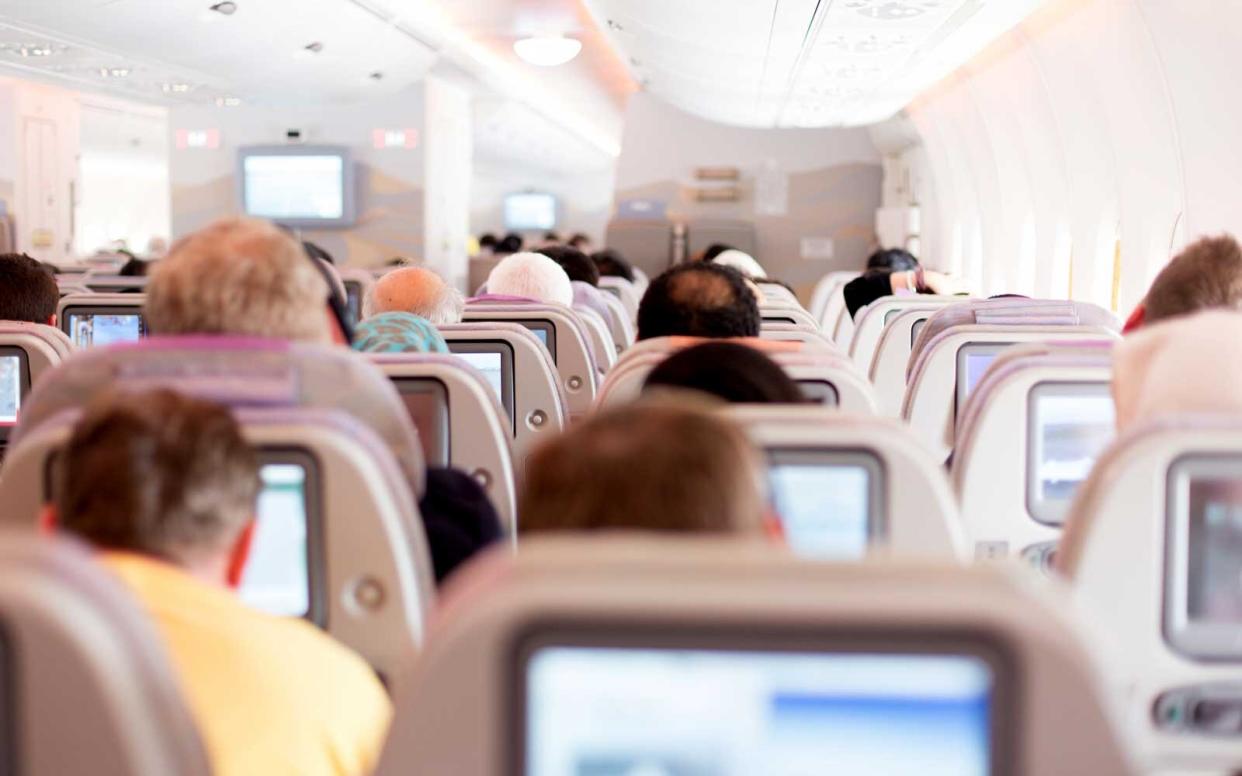Why You Should Always Move Over If There's an Empty Seat in Your Row on an Airplane

Getty Images
One of the most precious commodities on an airplane is space.
Space for bags, space for armrests, space for legs, space to put your laptop down so you can comfortably work –– the list goes on. And sometimes, people's idea of "personal space" can differ wildly.
Imagine you're in this scenario: You board a plane. Your seat is at the end of a row (either the aisle or window). You settle in, and the next person comes in and sits in the middle seat. The doors close and you notice something truly magical: the third seat is open.
Most people, if they have any spacial or self-awareness at all, would move to the other seat, leaving the middle seat empty. But, though it's rare, there are some people who don't seem to subscribe to this type of seat etiquette. These are our travel nemeses.
We've all sat down next to a person, whether its on a plane, or bus, or Uber Pool, who doesn't seem to understand leaving a space between other riders when the opportunity presents itself. You may ask yourself, "Who is this person? Why are they like this?" These are people who live and breathe chaos. After all, who in their right mind wouldn't take some extra space when it's presented to them? Humans are not meant to live like sardines.
Frankly, basic etiquette suggests that people should leave personal space for others when it's available. While we understand that not everyone identifies with the same definition of "personal space," most airplane seats are, frankly, too small not to move over. It not only allows the person next to you to get comfortable, but it also allows you to get comfortable. Win-win. According to etiquette expert Diane Gottsman, a personal bubble of two to four feet is generally best. Obviously, this rule can change on a bus or train, or if you're sitting next to someone you know well.
Of course, there are many reasons why a person may decide to stay put. Perhaps they're not fans of the window and/or aisle seat. After all, you're more likely to get slammed by a drink cart if you're at the end of a row or get incredibly cold while squished against the plane's wall.
Some may be worried they're insulting the person next to them by choosing to move away. Perhaps they don't want the person to think they smell funny. We assure you, no one will be offended — especially on a long trip.
Maybe it's just not worth the effort? We can see this being the case if you're on the bus or subway. After all, you might be getting off in one or two stops. If you're dealing with an uncommonly short trip on public transit, it's totally fine to stay put.
So, what do you do if you're seated next to a middle-seater? Before you ask them, "Who hurt you?," it's best to simply request, politely, that they move over. You're not asking for them to lay in the aisle, after all. Nine times out of ten, this works perfectly. After all, some people might just not be aware they are "allowed" to move, so you're just clearing it up for them. We strongly advise against pushing, shoving, name-calling, or other aggressive tactics. The same goes for passive-aggressive tactics like coughing, clearing your throat, or heavy sighs. Not everyone can pick up on these. Sitting in a silent rage is also not a great way to get what you want.
If the person politely declines, you can always try explaining how moving to the other seat can benefit both of you or even try to negotiate if they're not fans of the seat. And since you've already made a good impression by politely asking in the first place, there's very few instances when this would fail. You catch more flies with honey than with vinegar, as they say.
Next time you find yourself with the opportunity to spread out, by all means, do so. For the good of humanity.

